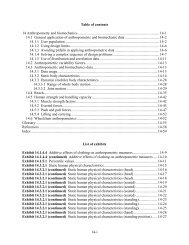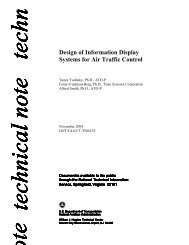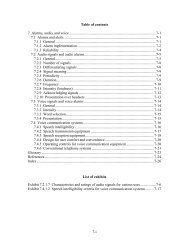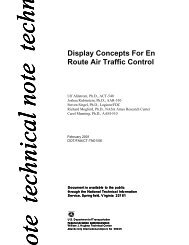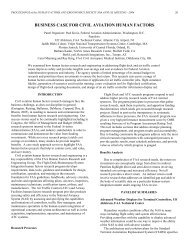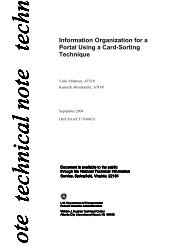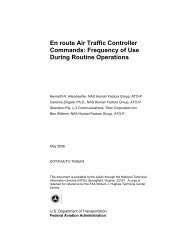Human Factors Criteria for the Design and Acquisition of ... - FAA
Human Factors Criteria for the Design and Acquisition of ... - FAA
Human Factors Criteria for the Design and Acquisition of ... - FAA
You also want an ePaper? Increase the reach of your titles
YUMPU automatically turns print PDFs into web optimized ePapers that Google loves.
Keyboards June 20049.16.4 User selectable key repeat rate. Users should beable to set <strong>the</strong> initial delay <strong>and</strong> repeat rate <strong>for</strong> keys.[Source: NUREG 0700, 2002]Additional in<strong>for</strong>mation. Allowing <strong>the</strong> user to select <strong>the</strong>repeat rate accommodates users with disabilities whomay require a longer delay.9.16.5 Connection point <strong>for</strong> alternative input device. Acomputer or computer system should provide a point atwhich an alternative input device can be connected ifmodifications cannot be made to make a st<strong>and</strong>ard inputdevice accessible. [Source: Scadden & V<strong>and</strong>erheiden, 1988]9.16.6 Non-visual indication <strong>of</strong> state <strong>of</strong> toggle keys. Acomputer or computer system should provide blind userswith a non-visual indication <strong>of</strong> <strong>the</strong> state <strong>of</strong> toggle keysthat is available automatically or upon <strong>the</strong> user's request.[Source: Scadden & V<strong>and</strong>erheiden, 1988]9.16.7 Key demarcation. All keys should have edgesthat can be discerned by touch. [Source: Scadden &V<strong>and</strong>erheiden, 1988]Additional in<strong>for</strong>mation. Flat, membrane keyboardswithout ridges outlining <strong>the</strong> keys can be particularlydifficult <strong>for</strong> <strong>the</strong> visually impaired to use. [Source: Scadden& V<strong>and</strong>erheiden, 1988]9.16.8 Key labels. Alternatives to visual key labelingshould be made available <strong>for</strong> visually impaired users.[Source: Scadden & V<strong>and</strong>erheiden, 1988]9.16.9 Distinguishing macro input from typed input.Computers <strong>and</strong> computing systems should be able tokeep up with assistive s<strong>of</strong>tware input. [Source: Scadden &V<strong>and</strong>erheiden, 1988]Additional in<strong>for</strong>mation. Keystrokes generated byassistive devices or assistive s<strong>of</strong>tware may be sent fasterthan <strong>the</strong> application s<strong>of</strong>tware can recognize <strong>the</strong>m, inwhich case, <strong>the</strong>y may be ignored, thus preventing use <strong>of</strong><strong>the</strong> assistive device or s<strong>of</strong>tware. [Source: Scadden &V<strong>and</strong>erheiden, 1988]9-41



